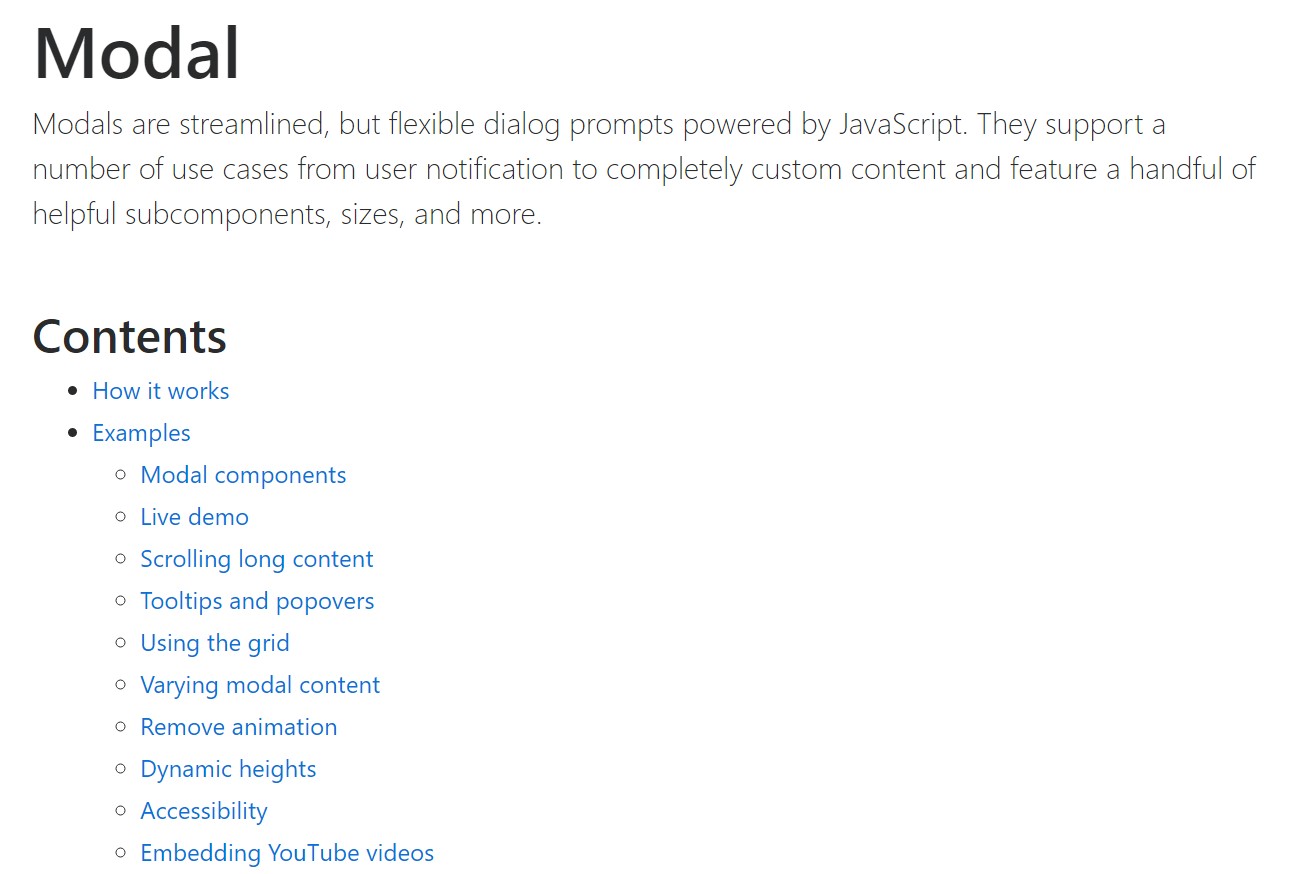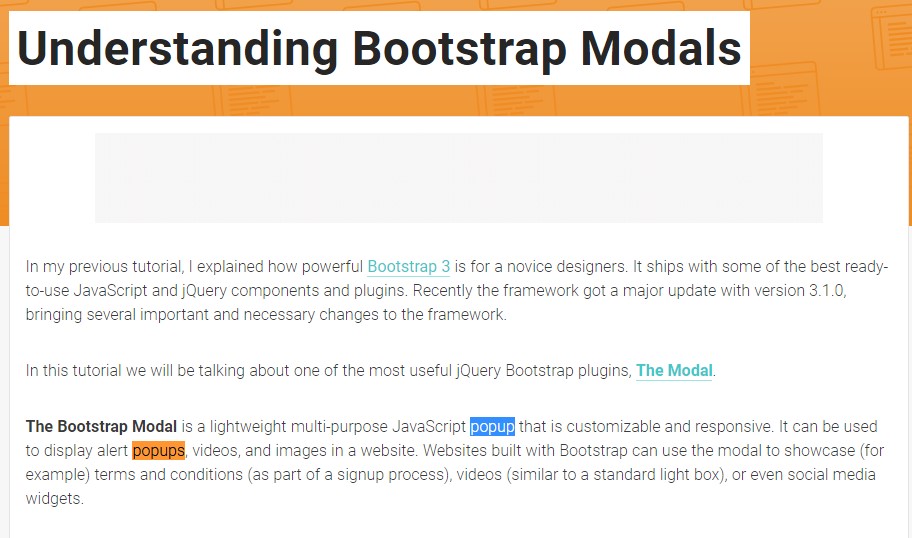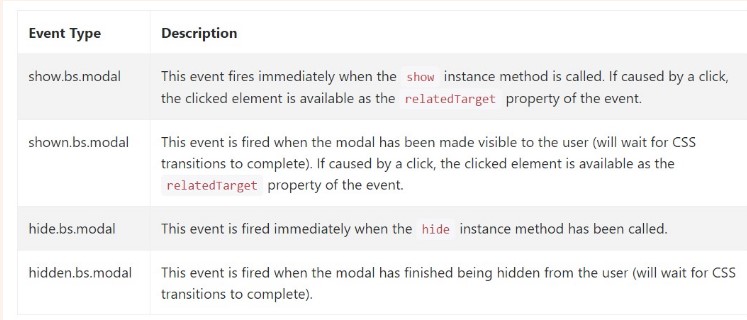Bootstrap Modal Popup Set
Intro
Oftentimes, when we build our webpages there is this sort of content we don't wish to occur on them up until it's really required by the guests and whenever such moment takes place they should have the capacity to simply take a simple and intuitive activity and receive the required info in a matter of minutes-- swiftly, convenient and on any sort of display size. If this is the situation the HTML5 has simply just the correct component-- the modal. ( additional hints)
Critical items to take into consideration:
Just before getting started with Bootstrap's modal component, don't forget to read through the following as long as Bootstrap menu options have already altered.
- Modals are developed with HTML, CSS, and JavaScript. They are really positioned above anything else inside the document and remove scroll from the
<body>- Clicking the modal "backdrop" is going to automatically close the modal.
- Bootstrap only supports a single modal pane simultaneously. Nested modals usually aren't maintained given that we consider them to remain unsatisfactory user experiences.
- Modals usage
position:fixeda.modal- One once more , due to
position: fixed- In conclusion, the
autofocusContinue reading for demos and usage guides.
- Caused by how HTML5 specifies its own semantics, the autofocus HTML attribute possesses no result in Bootstrap Modal Popup Header. To accomplish the equal result, use some custom-made JavaScript:
$('#myModal').on('shown.bs.modal', function ()
$('#myInput').focus()
)How you can utilize the Bootstrap Modal Popup Set:
Modals are completely sustained in the most recent fourth version of one of the most well-known responsive framework-- Bootstrap and can easily likewise be designated to exhibit in different dimensions inning accordance with designer's desires and vision yet we'll go to this in just a minute. Primary let's see ways to produce one-- bit by bit.
Initially we demand a container to handily wrap our hidden web content-- to make one make a
<div>.modal.fadeYou need to provide certain attributes additionally-- like an unique
id=" ~the modal unique name ~ "tabindex=" -1 "Tab.modal-dialog.modal-lg.modal-smNext we demand a wrapper for the actual modal content having the
.modal-content.modal-header<button>.closedata-dismiss="modal"<span>×<h1>-<h6>.modal-titleRight after adjusting the header it is actually time for developing a wrapper for the modal content -- it needs to happen together with the header component and carry the
.modal-body.modal-footerdata-dismiss="modal"Now after the modal has been established it is actually moment for developing the element or elements which in turn we are willing to apply to launch it up or else to puts it simply-- create the modal come out ahead of the audiences when they make the decision that they need the relevant information held within it. This typically gets completed by having a
<button>data-toggle = "modal"data-target = " ~ the unique ID attribute of the modal element we need to fire ~ "Approaches
.modal(options)
.modal(options)Switches on your content as a modal. Receives an alternative options
object$('#myModal').modal(
keyboard: false
).modal('toggle')
.modal('toggle')Manually toggles a modal. Go back to the user just before the modal has in fact been presented or disguised (i.e. prior to the
shown.bs.modalhidden.bs.modal$('#myModal').modal('toggle').modal('show')
.modal('show')Manually begins a modal. Come back to the user right before the modal has actually been revealed (i.e. before the
shown.bs.modal$('#myModal').modal('show').modal('hide')
.modal('hide')Manually covers up a modal. Returns to the caller before the modal has in fact been covered (i.e. right before the
hidden.bs.modal$('#myModal').modal('hide')Bootstrap modals occasions
Bootstrap's modal class introduces a handful of events for entraping into modal functionality. All modal events are fired at the modal in itself (i.e. at the
<div class="modal">$('#myModal').on('hidden.bs.modal', function (e)
// do something...
)Conclusions
Generally that is simply all of the necessary aspects you have to take care about whenever generating your pop-up modal component with newest 4th edition of the Bootstrap responsive framework-- right now go find some thing to cover in it.
Review several on-line video training about Bootstrap Modal Popup:
Related topics:
Bootstrap Modal Popup: authoritative documents

Bootstrap Modal Popup: guide training

Yet another helpful post concerning Bootstrap Modal Popup


